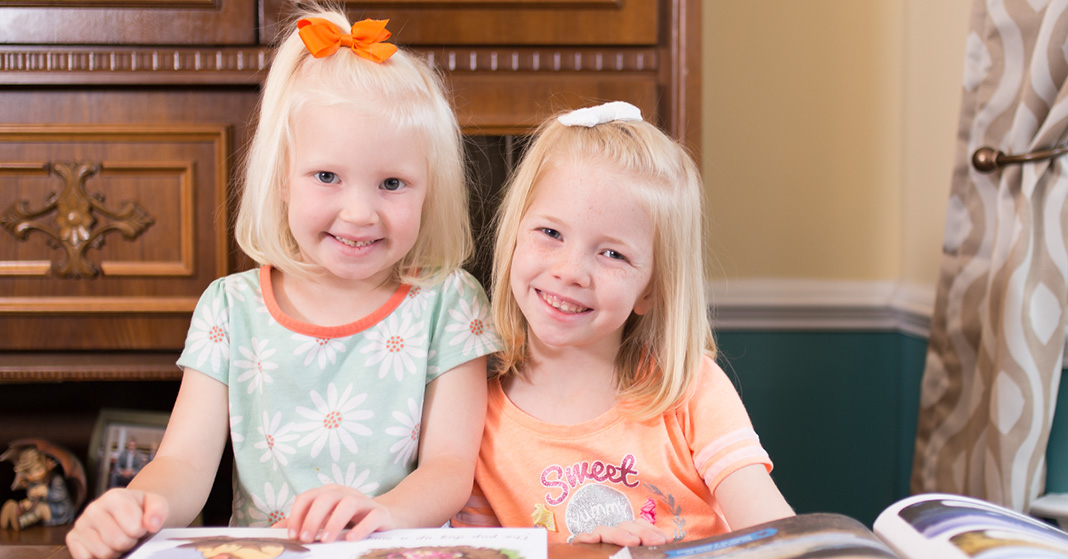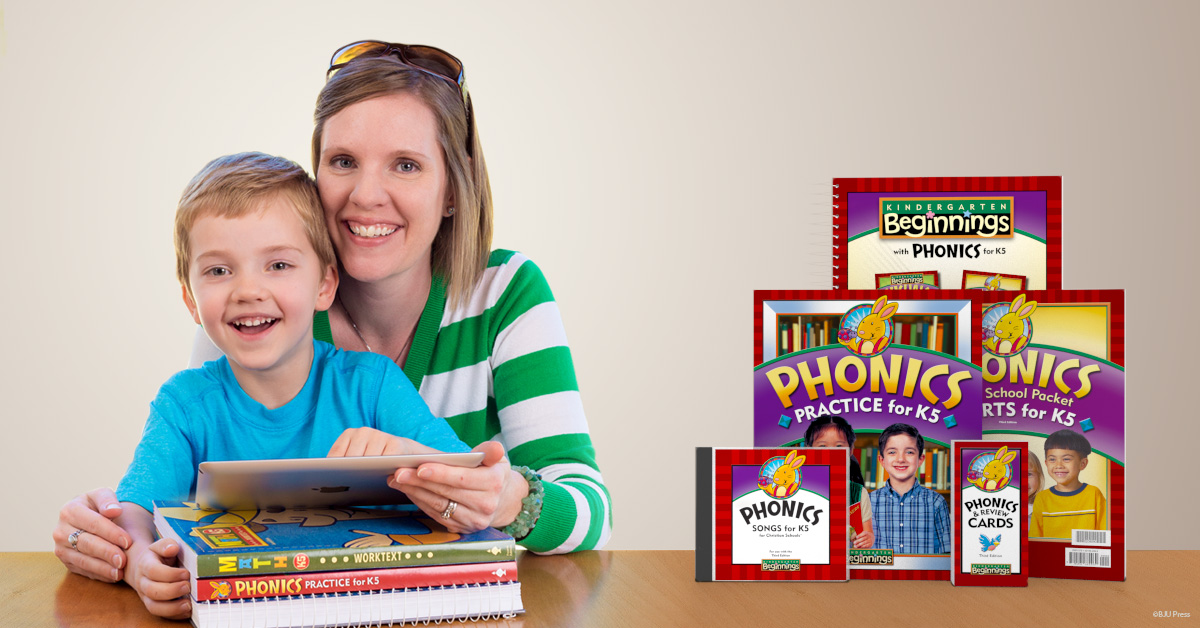
I always knew I wanted to homeschool my children, and I even knew which curriculum I would use. Having worked in the marketing department at BJU Press for three years, I had become convinced of the excellence of their materials. But there was still that nagging doubt in the back of my mind: Can I really do this? I have no idea what I’m doing! What if I mess up and my kids turn out to be ignoramuses? K4 would be my first test.
When my older daughter was four, I bought a preschool workbook and taught her from it for several minutes a day. She was catching on quickly with letters, simple words and numbers. But I felt she still might not be ready for kindergarten. So after looking online at BJU Press materials, I decided the K4 DVD program would provide a solid bridge between “pre-preschool” and K5. I thought it might also help me as a first-time homeschooler to establish a consistent routine.
Happy K4 Kid
The K4 DVD program didn’t disappoint—in fact, it exceeded my expectations. The DVDs kept my daughter interested and engaged with colorful graphics, animal characters, puppets, and fun songs. She was always eager and excited to do her daily lesson. Her teachers presented the material in a way that was easy for her to understand. I love that the program taught my daughter to listen, pay attention, and follow the teachers’ instructions. It also introduced basic but important concepts of English, reading, and math through emphasizing the alphabet and counting. Finally—and most importantly—it centered on God’s Word and incorporated its truth into every lesson.
Happy Mama
As the parent, I appreciated the fact that the program was well organized and easy to follow. I also liked the length of the DVD lessons, about sixty minutes—not too long, not too short. Using the DVDs was convenient as well; I was able to pause or rewind the program as needed. And since there were only 153 lessons, I enjoyed the flexibility of choosing how many days per week to have school.
Ready for K5
By the end of the program, I felt confident that my daughter would be ready for kindergarten the following year. She had a good grasp of the fundamentals of phonics, reading, and math. She had also developed a love for learning that helped her look forward to kindergarten with great anticipation. We had established a good, consistent school routine that helped me to plan for the next year. And I felt much more confident about this whole homeschooling thing. Kindergarten went great (I decided to stick with the DVD format); and when my younger daughter was approaching school age, there was no doubt in my mind about where to start. Using the K4 program was one of the best decisions I’ve made as a home educator, and I would highly recommend it to both new and experienced homeschoolers with preschool children.
• • • • •
Jennifer is a pastor’s wife and mom of two young girls and loves being able to homeschool them. During her own twelve years of homeschooling, Jennifer developed a passion for reading and writing. She earned a bachelor’s degree in creative writing and relishes writing during her free time.

